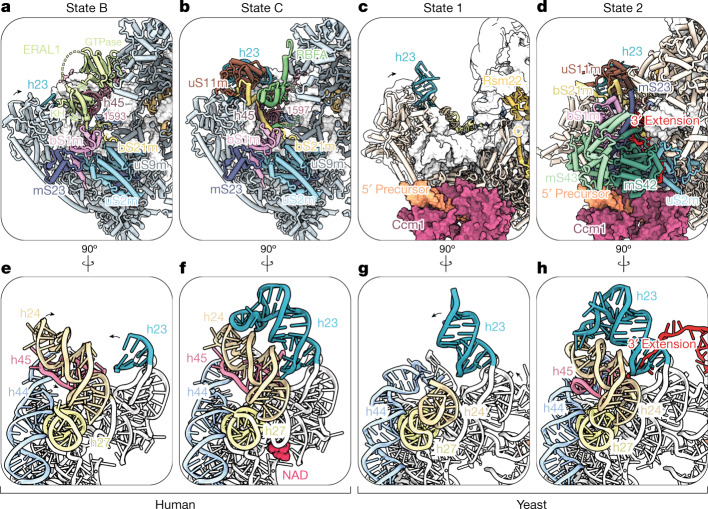Fig. 3. rRNA stabilization of the 3′ end and platform formation are coupled in yeast and human assembly.
a, Model of the architecture around the rRNA 3′ end in human state B, illustrating binding of the 3′ end by ERAL1 and pre-recruitment of bS21m. The arrows highlight platform compaction that occurs between states B and C. b, Model of the architecture around the rRNA 3′ end in human state C, showing repositioning of the 3′ end via RBFA binding and recruitment of a uS11m–h23 module through bS21m. c, Model of the platform architecture in yeast state 1, before backpack and 3′ rRNA incorporation via the backpack. rRNA h45 is not yet incorporated into the particle, and the arrow highlights platform compaction that occurs between states 1 and 2. d, Model of the platform architecture in yeast state 2, after backpack docking and stabilization of 3′ rRNA. In parts a–d, conserved protein and rRNA elements share the same colours. e, Side view of the platform region rRNA in human state B. The arrows show movement of rRNA elements occurring between states B and C. f, Side view of the platform region rRNA in human state C, revealing compaction of the region, h23 binding and accommodation of NAD. g, Side view of the platform region rRNA in yeast state 1. The arrows show movement of rRNA elements occurring between states 1 and 2. h, Side view of the platform region rRNA in yeast state 2, revealing compaction of the region and ordering of rRNA h23, h24 and h45.

